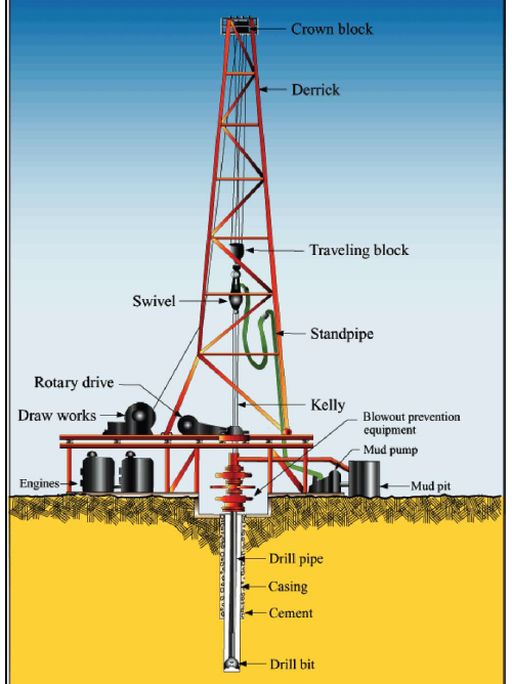Introduction

http://3.bp.blogspot.com/-DyJDzfBXehk/Tgo8GuwgGWI/AAAAAAAAACw/lkK3iU4WqLc/s1600/Drilling-rig-picture.jpg
When most people think of petroleum recovery, the ubiquitous oil rig comes immediately to mind. Oil rigs allow us to drill thousands of feet into the ground to reach the layers of sedimentary rock that contain the oil we need to fulfill our global energy needs. To reach these deep layers of oil-rich rock, the oil rig uses tension and torque to accomplish its job. The tension involved is a product of the complex pulley system contained in the derrick and involves the fixed-position crown block and the variable- position traveling block. The pulley system is controlled by the draw works and powered by the rig's diesel engines. These diesel engines also power the rotary drive, which creates torque. The torque rotates the drill pipe, and in doing so, the drill bit, allowing us to bore through soil and rock. While the picture above does a decent job of labeling the various parts of a drilling rig, you can actually see a walk-through tour of a drill rig here.

http://www.rogtecmagazine.com/blog/wp-content/uploads/Picture-323.png
While oil fields can be in some of the most inhospitable environments on the surface of our planet, desert heat and arctic cold are nothing compared the conditions deep under the ground. Above, you can see some nice squiggly lines. This is a cross-section of a part of the earth's crust. These lines are actually layers of solid rock, hundreds of feet thick, warped and bent by extreme pressure. Cutting through these layers of rocks are stress fractures called faults. Can you imagine how much pressure it takes to crack thousands of feet of solid rock?

http://www.dimensionsinfo.com/wp-content/uploads/2010/02/Unit-Conversion.gif
Physics is a science involved in quantifying natural phenomena. While numbers can be useful, they mean little without corresponding units of measurement. We'll have a look at one of the truly odd units that petroleum engineers find useful: the darcy.